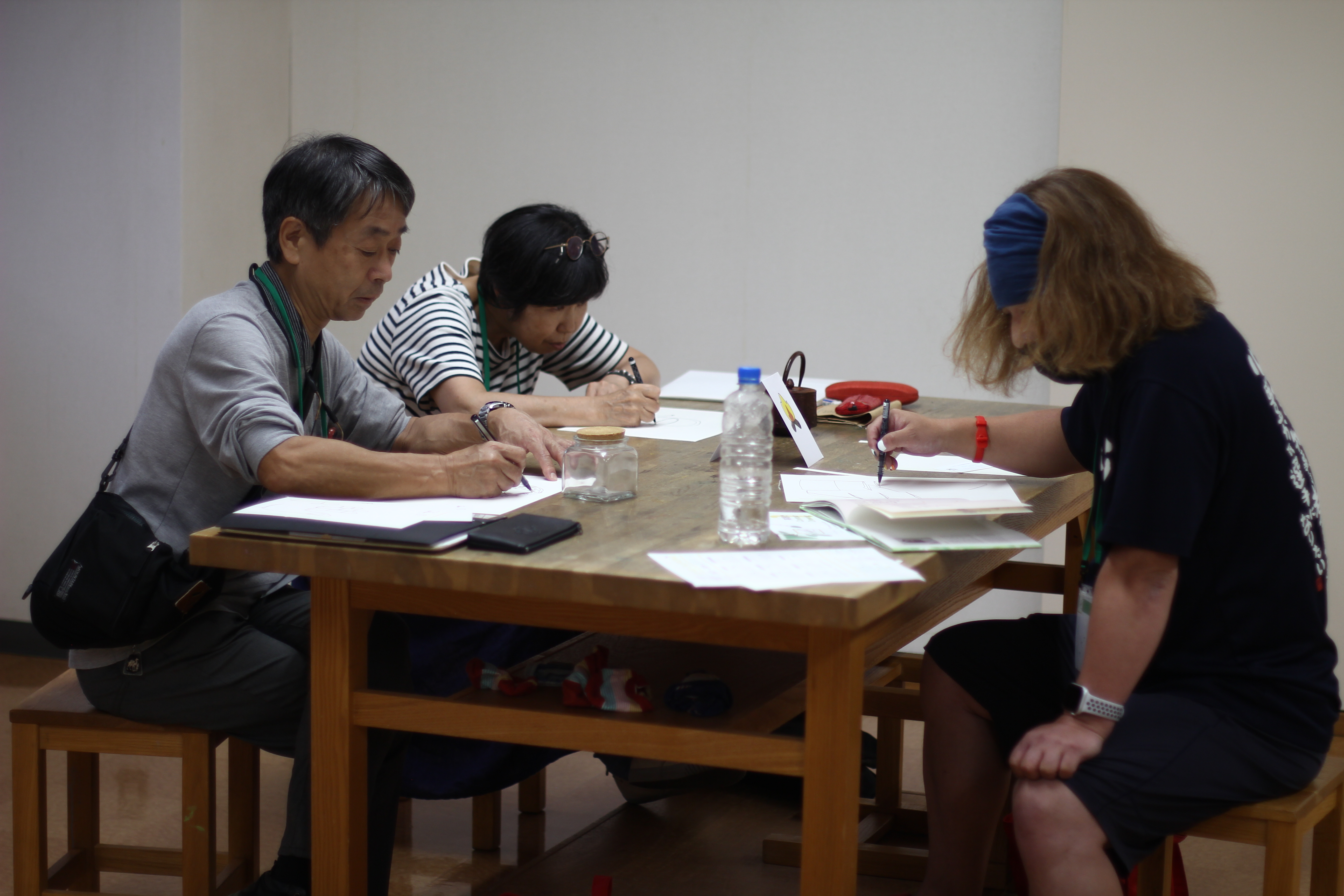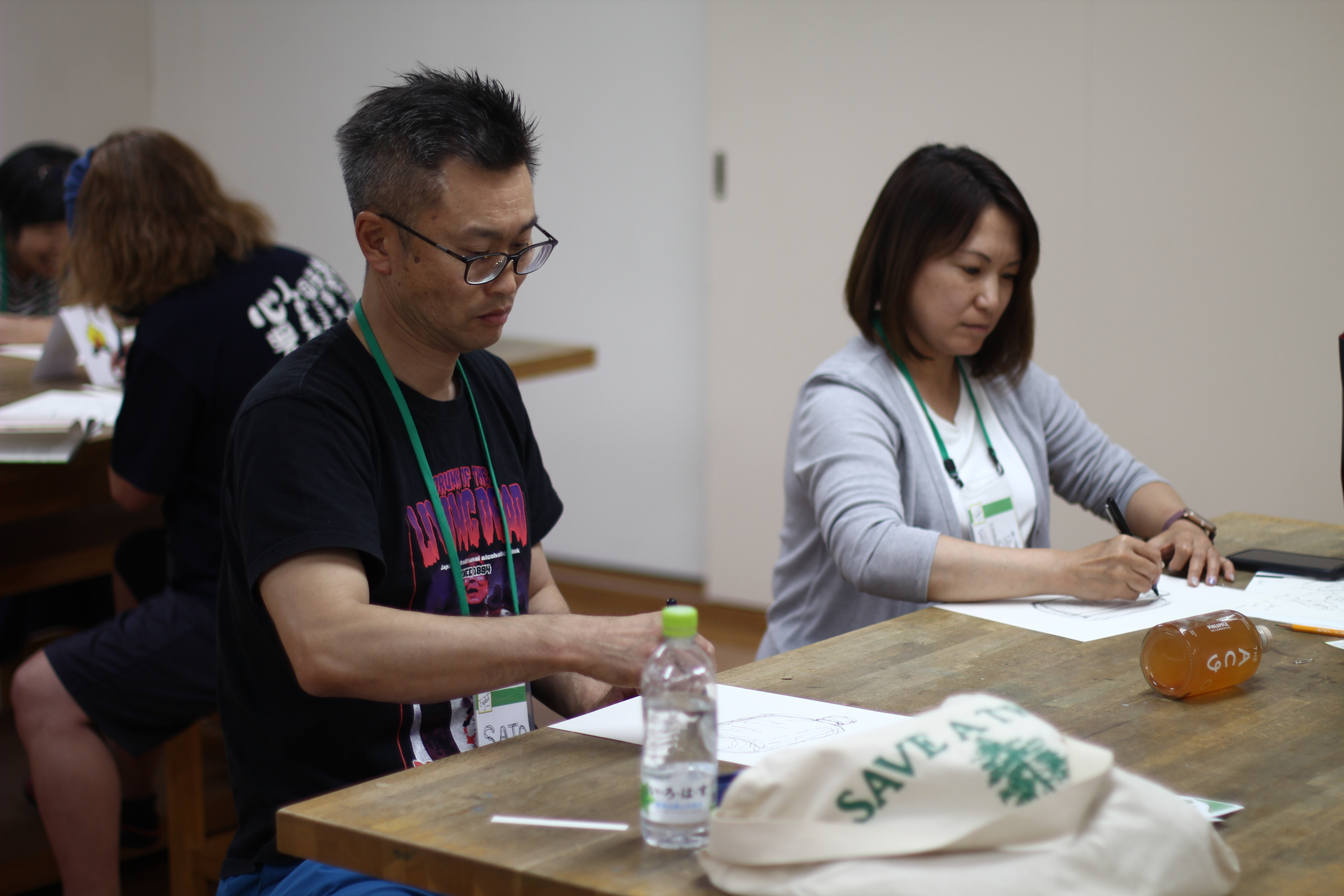English Square 1 – Contour Drawing
Art Talk
ES1 – 7/6/2023
“A line is a dot that went for a walk”
線は散歩に出かけた点である
-Paul Klee
During the first English Square session, we talked about Contour Drawing.最初のイングリッシュ・スクエアのセッションでは、コントゥアー・ドローイングについて話した。
One-Line Contour drawings are drawn using one single line. This is often used as a warm-up for artists; it helps you to loosen up and see objects. Every part of the object can be represented as a curve or a line: Shadows, Highlights, Textures. Many famous artists used contour drawings (some break the line, but it is still a type contour drawing).
一本線の輪郭画は、一本の線を使って描かれる。これはアーティストのウォームアップとしてよく使われるもので、気を緩めて物体を見るのに役立ちます。物体のあらゆる部分を曲線や線で表現することができる: 影、ハイライト、テクスチャー。多くの有名な画家が等高線デッサンを使っている(線を崩す画家もいるが、それでも一種の等高線デッサンであることに変わりはない)。


Even Picasso! ピカソでさえも!
Simple and beautiful: Quibe Extremely complex: Kris Trappeniers
Blind Contour
We also worked on “blind contour” drawing! Without looking at our paper, we draw a subject. We trace the object with our eyes.「ブラインド輪郭画」にも取り組んだ!紙を見ずに対象を描き、目でなぞります。
“Do not be concerned about how your drawing will “look.” This is an important exercise in “seeing”.
Blind Contourの 「見栄え」を気にしてはいけない。これは「見え方」ことの重要な訓練なのだ。
Examples:
https://www.shuchihart.net/blind-contour-line-drawing-portrait
More examples:
https://www.staceofspades.com/products/blind-contour-drawings
English
“Hang On” “One second, please.” “Just a sec.”
“Octagon” “Pinecone”
“Validate Parking” (駐車券を発行)
Examples:
“If you go to the front desk, they can validate your parking”
“Does your hotel validate parking?”
“We validate parking for customers dining at our restaurant.”
“Can you validate my parking?”
Pronunciation
Today’s Hatsuon Point was L/R.
Your tongue is a muscle! If you don’t exercise your muscle, you can’t get better. Try to work out your tongue each day.
舌は筋肉ですよ!筋肉を鍛えなければ、良くなることはありません。毎日、舌を鍛えるようにしましょう。
Class 1’s Hatsuon Point: L/R
If there’s an L, your tongue moves forward, and touches or taps the roof of your mouth or the back of your teeth. Words that start with “L” begin with your tongue resting on the roof of your mouth, just behind your teeth.
Lがつくと、舌が前に出て、口の天井や歯の裏側に触れたり、叩いたりします。Lで始まる単語は、舌を口の天井や歯の裏側につけて発音します。
Lift Late Long Line “Lovely Melon Stall”
If there’s an R, your tongue moves back, and it doesn’t touch anything. If your tongue touches anywhere in your mouth, it isn’t an R!
Rがあれば、舌は後ろに動き、何も触れない。舌が口の中のどこかに触れるなら、Rではなくなります!
Read Write Rest
Break Bread
“Raise Your Arms”
Combination Challenge: If you say the word “Relax,” your tongue starts without touching anything, and it taps the top of your mouth in the middle. This is challenging! Can you make your tongue move correctly?
Clear Blind Contour Calendar
Color Flavor Arlington (my hometown!)
Super Challenge! “I really break plates lately”
Today’s Hatsuon Practice:
Freely Loosely Lightly Lightheartedly
Root Words (語源) (Shallow End)
 In English, many words come from Latin and Greek.
In English, many words come from Latin and Greek.英語では、多くの単語がラテン語やギリシャ語から来ています。
Especially when we are talking about numbers.
特に数字の話をしているとき。
I mentioned the 8-sided shape, “octagon.”
8角形の 「八角形 」(オクタゴン)について述べた。
Here are other number words we find in english.
以下は、英語で使われるその他の数字の単語である。
The names of the months seem confusing, but in ancient Rome, the year started in March, not January!
月の名前が紛らわしいが、古代ローマでは1年の始まりはJanuaryではなくMarchだった!
| # | Latin | よく使っている単語 |
| 1 | uni/ūnus | unicycle ユニサイクル(一輪車) |
| 2 | bi/duo | bicycle バイセィクル (自転車) |
| 3 | tri/trēs | tricycle トライセィクル, triathalon トライアスロン |
| 4 | quattuor | quarter クアター (1/4) |
| 5 | quīnque | quintet クインテット (五重奏) |
| 6 | sextus | sextuplet セクスタプレット (6つ子) |
| 7 | septem | September 9月 (古代ローマでは7月でした) |
| 8 | octō | October 10月 (古代ローマでは8月でした), octopus タコ, octogon |
| 9 | novem | November 11月 (古代ローマでは9月でした) |
| 10 | decem | December 12月(古代ローマでは10月でした), decimal デセィマル (算数の点: 0.1 など) |
Root Words (語源) (Deep Sea)
 The English language comes from many different languages, but the main ones are Latin and Greek. Like in Japanese, if you know the Kanji (from the chinese root) you can make an educated guess about a word, even if you don’t know the meaning. By the way, the study of a word’s roots is called etymology. (エティモロジー)
The English language comes from many different languages, but the main ones are Latin and Greek. Like in Japanese, if you know the Kanji (from the chinese root) you can make an educated guess about a word, even if you don’t know the meaning. By the way, the study of a word’s roots is called etymology. (エティモロジー)Some words that we talked about in class are: Malvoyant and Ambidexterous.
Actually, malvoyant is French, but since French also has a latin root (ラテン系), I could guess the meaning. “Mal” means “bad” and “vērus.” means “sight/see.” Can you guess the meaning? “Visually impaired,” in other words, “blind.”
In english, “Mal” is used to create a bad or negative meaning: “Malpractice” 「過誤」, “Malignant”「悪性(腫瘍)」, “Malicious”「悪質」
Another word we talked about is ambidextrous. “Ambi” means “both, or balance between two forces” and “dexter” means “right-handed,” or “correct.” That’s why “right” means 右 and 正しい in English. Most people had fine-motor skills (微細運動技能) on their right side. (Sorry, left-handed people!) So, it means you can use both hands well (rather than being left-handed or right-handed).
Some other words that use mal-, voy-, ambi, and dexter are:
malfunction マルファンクション (誤動作)
voyeur ヴォイヤー (出歯亀)
dexterity デックステリティー (coordination, 手際)
ambiguous アムビギュアス (微妙)
Photos












お疲れ様です!(there’s no word for that in English!) I’m looking forward to seeing you all next week. See you later!
![一般社団法人 北上国際交流協会[北上市国際交流ルーム]](https://k-iah.com/kiah/wp-content/themes/kiah0606/images/site-logo2_footer.png)
![一般社団法人 北上国際交流協会[北上市国際交流ルーム]](https://k-iah.com/kiah/wp-content/themes/kiah0606/images/site-logo2.png)